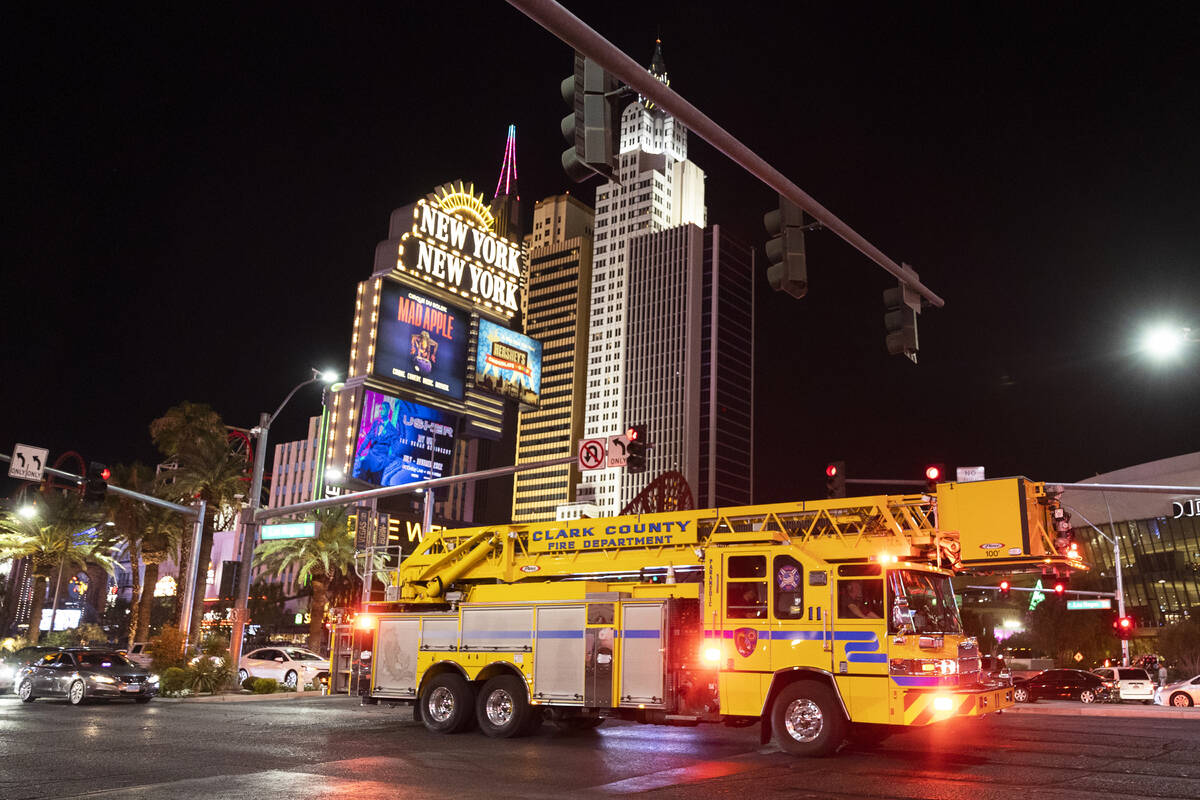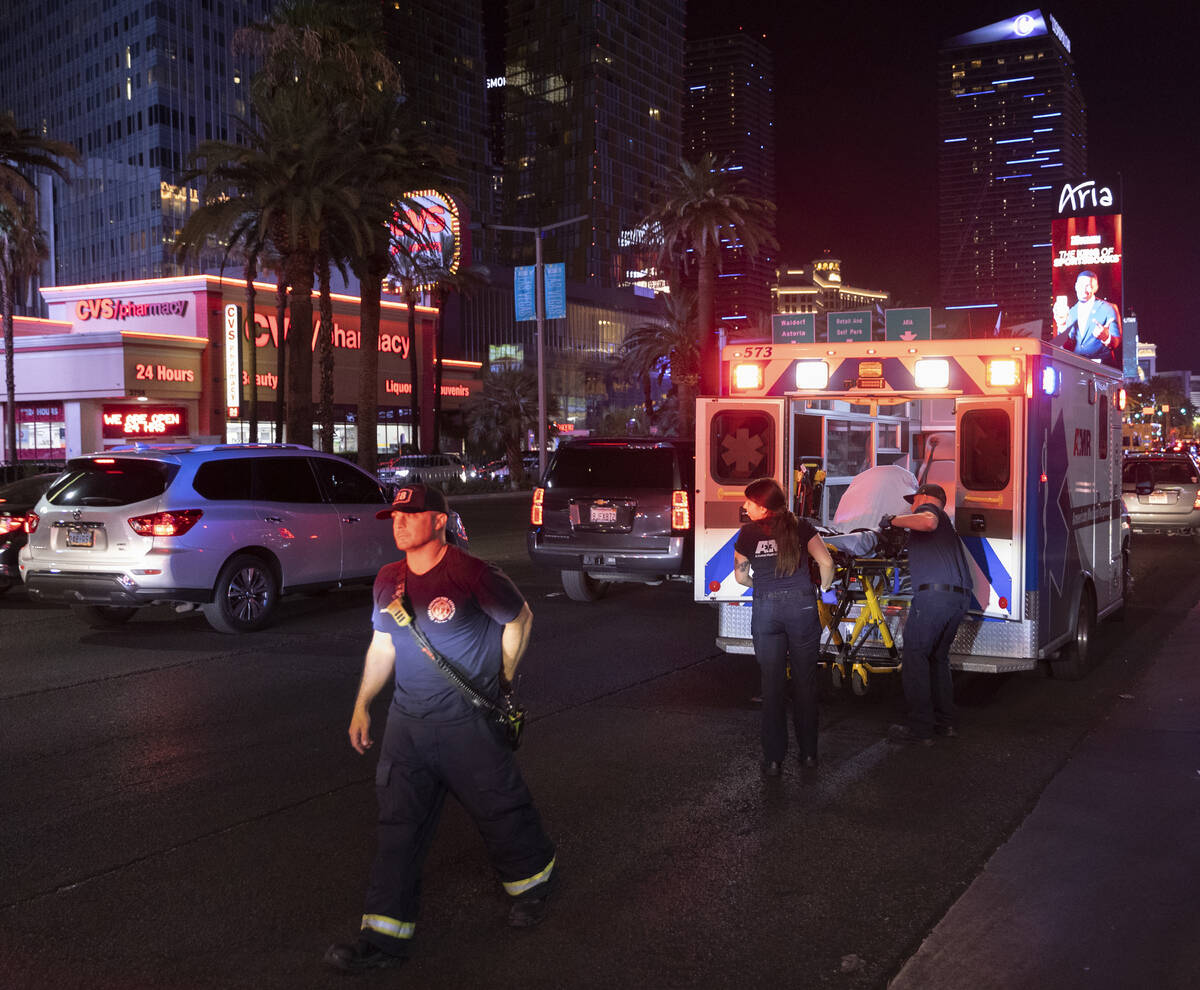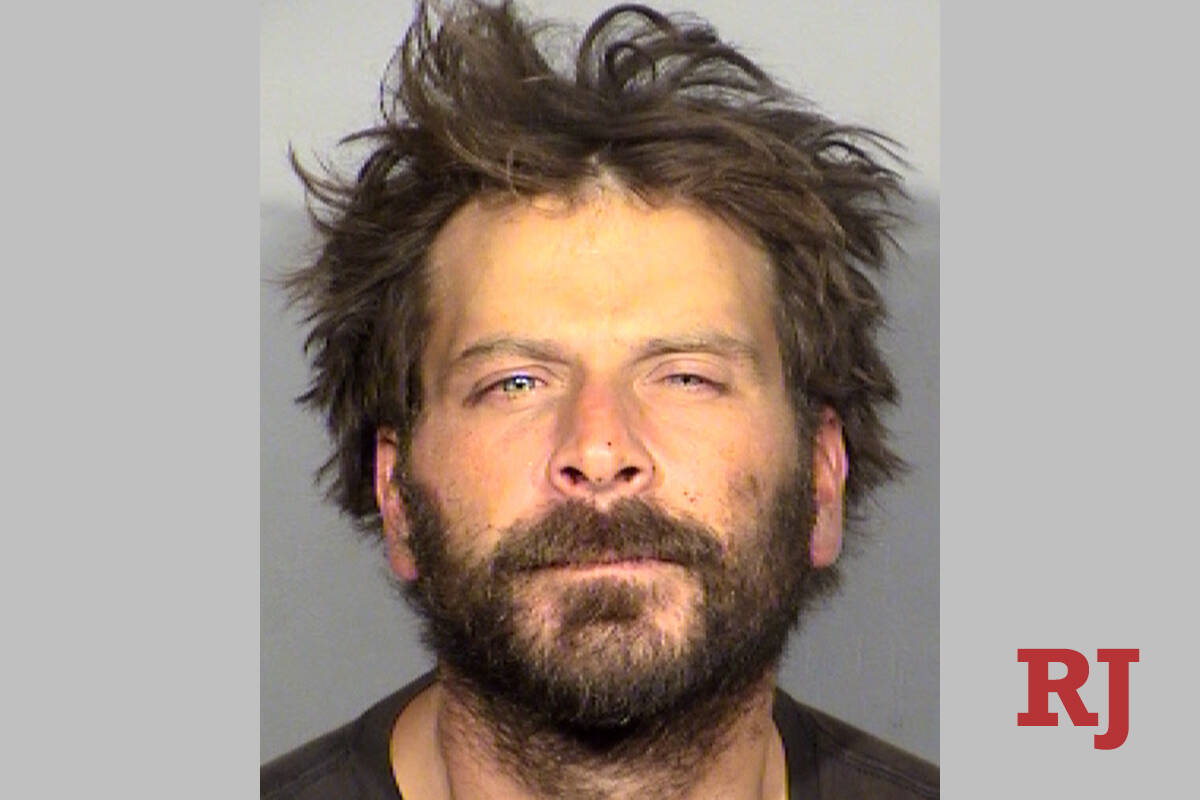‘I always felt very safe there. Not anymore.’: Strip tourists express new worries
On a flight to Las Vegas earlier this month, a Florida family discussed how they planned to react in the unlikely event they found themselves having to flee from an active shooter in a crowded place.
Ronald Balogh and his parents planned to scatter, hide and meet up when it was safe.
“We had thought about it,” he said, adding that the July 4 shooting on a parade route in Illinois a few days prior was fresh in their minds.
These days, those thoughts may not be uncommon in America.
UNLV psychology professor Stephen Benning pointed to the “priming effect,” in which coverage in news media of massacres and ensuing discourse leave people thinking that the same thing could happen to them.
“It then shifts people’s threat bias to detecting threats more readily or interpreting events as threatening where otherwise they may be ambiguous,” Benning said.
That is when “survival mechanism” kicks in, he added.
While on the Strip late Saturday night, Balogh and his mother, celebrating her 82nd birthday, found themselves in the midst of an apparent threat as a sea of people started to rush toward them inside Aria, repeatedly yelling “shooter!”
The pandemonium reverberated across Las Vegas Boulevard and several Strip properties.
Police said the panic was triggered by the sound of shattering glass at the MGM Grand’s valet area when a man threw “medium-size” rocks against windows.
Bradley Thompson, 42, had been upset with resort security after they kicked him out of the property, according to the Metropolitan Police Department.
‘Just sheer panic’
Later that night, Metro Capt. Branden Clarkson suggested that recent mass shootings across the U.S. may have contributed to the widespread fear.
Psychologists, crowd management experts and Balogh agreed.
“It was very real for me,” he said, noting that at the time he and his family felt there was a shooter in the vicinity. “This was kind of a non-event, but it was so, it was so poignant that it left a mark.”
Balogh and his mother were on the south side of the Aria casino when the panicked crowd began to scatter. While they did not hear gunshots, his first instinct was to grab his mother and run.
As they arrived near an exit, Balogh’s mother fell and suffered an arm injury. They were ushered inside a pizzeria kitchen where they hid about 30 minute until they were told it was safe to come out.
The woman was taken by ambulance to a nearby hospital. Metro officials reported one minor injury, but Balogh said that on the ride to the hospital, paramedics spoke about multiple others who needed hospitalization after people were injured.
“Within one second, it goes from just a normal Saturday night with a large crowd of people in there to just sheer panic,” he said. “I lost focus of everything else sort of around me. I was surprised at how fast and how little time you have to decide what to do.”
Family members, who were spread out at other casinos after his mother’s birthday dinner, recalled similar experiences, Balogh said.
The terrifying feeling left Balogh with a lost sense of safety on the Strip, which his family regularly visits.
“It changes your perception of the place,” he said. “I always felt very safe there. Not anymore.”
‘Quick, clear, reassuring communication’
Tamara Herold, associate UNLV professor and director of the Crowd Management Research Council, said authorities and hotel personnel could help dispell the rumors.
“Quick, clear, and reassuring communication from police and place managers, both in-person and through various media outlets — including social media, can help to reduce fear, calm crowds, and reduce harms resulting from these incidents,” Herold wrote in an email.
Jeanne and Ralph Huggins, visiting from South Carolina, were on a pedestrian bridge after a night of walking through casinos and gambling.
The sight of a few people running startled them momentarily, but they brushed it off as normal late-night shenanigans on the tourist corridor.
Then the crowd multiplied into the hundreds, said Jeanne Huggins, 59, noting that she saw children falling and adults dragging the kids to safety. People shoved and fought to stay on their feet, she said.
“If you didn’t move, you were going to get stampeded,” she said.
The couple sought refuge in The Cromwell, and did not feel safe until they heard a police officer say that there was no shooter.
Videos posted on social media show crowds of people running and others seeking shelter behind knocked-over gaming tables.
Jeanne Huggins’ husband, Ralph, 59, said that mass shootings had been in the back of the couple’s minds, and described going out where there are large crowds as playing “Russian roulette.”
That the shooting threat ended up being false did not take away from the fear Jeanne Huggins felt.
“How do you get prepared for something like that?” she said, acknowledging a sense of “hopelessness,” and thinking about how she would have reacted if her children or grandchildren were there.
“At that moment, you don’t know if you’re in that situation,” she said.
When a rumor of gunfire starts, particularly in the current U.S. climate of high-profile mass shootings, the panic can spread quickly, causing dangerous scenarios that can rise to swarming, crushing and serious injury, said Herold, the crowd management expert.
A panicked crowd might weigh those consequences and think that it is better to be wrong than freezing in place and possibly being killed, Benning said.
“The risk of being wrong in that situation in which you stay put when there’s danger approaching is greater than the risk of fleeing from a place where you’re engaging in entertainment and recreation and having that be a false alarm,” he said. “Those consequences are relatively small compared to what would happen if people stayed put when actual danger and threat was present and they were unable to escape.”
History of false reports
There is a history of chaotic scenes playing out on the Las Vegas Strip after false reports of gunfire, one as recent as May when a crowd at a music festival scattered when they thought they heard a shooting.
In 2014, about 60 people were injured in a stampede after a Floyd Mayweather and Marcos Maidana boxing match at the MGM Grand Garden after the bang of a falling partition in a food court was confused for a gunshot.
Three years later, panicked club goers at the Cromwell scattered when they confused the sound of knocked-over statues as gunshots during a fight.
Then on Oct. 1, 2017, a gunman killed dozens and wounded scores others when he fired hundreds of rounds into a country festival.
“We have an example of a catastrophic mass shooting that’s continued to buzz after 22,000 people could not escape quickly,” Benning said. “We have a unique experience when that danger was a true threat and hundreds of people ended up injured.”
Contact Ricardo Torres-Cortez at rtorres@reviewjournal.com. Follow him on Twitter @rickytwrites.
























